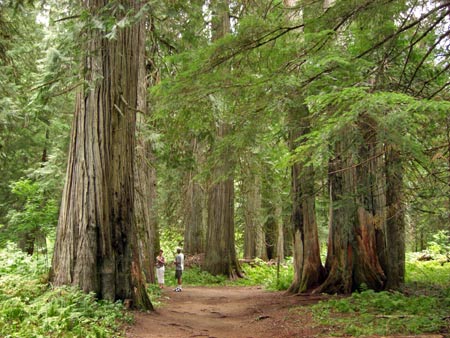By Michelle Werts

It’s a land of Douglas-fir, lodgepole pine, mountain hemlock, western redcedar, black cottonwood, quaking aspen and more. It’s 2.2 million acres of mountains, river valleys, hills, lakes and forest. Today, Kootenai National Forest celebrates its 107th anniversary of being part of the National Forest System — and we celebrate years of partnership with it.
Located along the border of northwest Montana and northeast Idaho, Kootenai National Forest contains breathtaking, glacial-formed landscapes. One of its crown jewels is the 94,000 acre Cabinet Mountains Wilderness, which has a history of big game hunting and mining, but has been protected as a “Primitive Area” since 1935 and as a wilderness area in 1964 with the passage of the National Wilderness Preservation Act. This area is so pristine that studies have shown that water from the Cabinet Mountains is among the top five percent of the purest water in the lower 48 states. The Cabinet Mountains aren’t the only area of interest in this national forest.

Ten Lakes Scenic Area provides visitors with 89 miles of trails, taking you through alpine mountains and by high mountain lakes. It’s a popular spot for horseback riding, as no motorized vehicles are allowed in the 6,400 acres of Ten Lakes. And for the tree lovers — aren’t we all? — Kootenai boasts Ross Creek Cedars Scenic Area, which is famous for the western redcedars that grow along the bank of the Ross Creek. This 100-acre grove has trees that date back more than 500 years.
Needless to say, Kootenai is a pretty spectacular place, which is why we’ve been helping to make sure it remains that way. Since 2006, we have planted more than 144,000 trees to restore various areas of this forest through our Global ReLeaf program. We’ve planted disease-resistant whitebark pine in order to help restore the population of the flagging keystone species for the benefit of the area’s wildlife, including the threatened grizzly bear, and we’ve conducting plantings in other areas to overturn the damage caused by additional pests, such as the Douglas-fir beetle, because we want to make sure Kootenai is around to celebrate many more anniversaries to come.